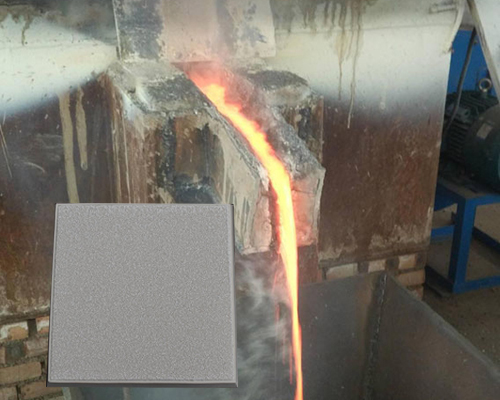Studies have shown that the use of ceramic foam filters for the aluminum alloy melts filtration can reduce the hydrogen content in the aluminum melt while removing slag.
In the process of smelting and forming castings, aluminum alloys are easy to absorb gas and mix in non-metallic impurities, thereby reducing the serviceability and processing performance of the castings. The use of ceramic foam filters is the most effective way to remove impurities in the aluminum melt.
With the increasing requirements for the quality of aluminum products, the requirements for alumina ceramic foam filters are also getting higher and higher. When using ceramic foam filters for molten metal filtration, you need to pay attention to the following points:

(1) Initial pressure head: For metal melt to pass through the pores of the filter, surface tension and flow resistance must be overcome, and a certain initial pressure head must be provided. Otherwise, it is difficult to achieve filtering.
(2) Temperature: In the initial stage of filtration, the filter needs to absorb the heat of the molten metal, so the molten metal needs a certain degree of superheat, and the filter also needs to be preheated.
(3) The cross section of the runner: In order not to affect the normal filling, the cross section of the runner where the filter is placed should be appropriately enlarged.
(4) Sealability: The connecting edge of the filter and the filter box should be sealed. If there is a slight gap here, most or all of the liquid may flow away from the gap without passing through the filter. Fiber cotton or expanded cotton can be used to seal around the filter.
(5) Filtration accuracy: The finer the pore size of the filter, the higher the filtration accuracy, but the problem of plugging holes is prone to occur. It is best to use a fiber filter with a larger pore size for coarse filtration.
(6) Filtering flow rate: The filtering flow rate is directly proportional to the through hole rate of the filter. Filtered with a filter, the large particles in the metal melt have a blocking effect on the pores of the filter, and the surface tension of the large non-wetting particles will reduce the melt flow rate and cause plugging in severe cases.
Due to the relatively low temperature of the molten aluminum and aluminum alloy, the use temperature of the alumina ceramic foam filter is also low. On the premise of meeting the requirements of use, it is the most economical and reasonable to use the low-temperature sintering process to make the alumina ceramic foam filter.

